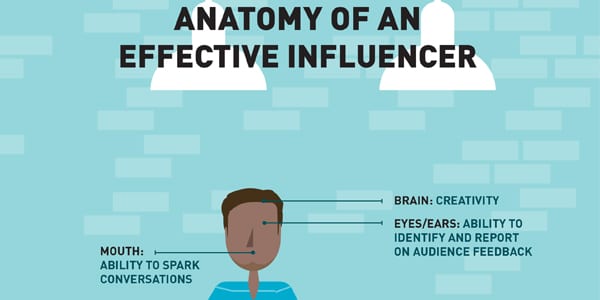 The CMO Club regularly brings marketing executives together in a forum that encourages knowledge exchange and networking. I had the pleasure of attending the 8th annual CMO Club Summit in New York City where I led a roundtable discussion about the ever-evolving ecosystem of influencers and bloggers in today’s marketing landscape. Participants asked questions and shared experiences related to influencer identification, tactics, challenges and disclosure in a lively guided, but open discussion.
The CMO Club regularly brings marketing executives together in a forum that encourages knowledge exchange and networking. I had the pleasure of attending the 8th annual CMO Club Summit in New York City where I led a roundtable discussion about the ever-evolving ecosystem of influencers and bloggers in today’s marketing landscape. Participants asked questions and shared experiences related to influencer identification, tactics, challenges and disclosure in a lively guided, but open discussion.
The participants in this roundtable discussion ranged from CMOs in technology and services, to startups, transportation and consumer goods, and included both B2B and consumer companies. While the spectrum of companies was diverse, a few consistencies emerged within the group.
Here are five of the biggest topics driving the influencer marketing discussion that emerged from our roundtable (click to tweet):
Compensation:
While most CMOs recognize that influencers who create content on behalf of brands are doing work that should be compensated, does compensation nullify the authenticity which makes influencers so valuable?
Disclosure:
The question of whether or not an influencer should disclose a relationship with a brand is agreed upon as yes. The problem, however, is the lack of enforcement of disclosure, which causes many influencers and brands to ignore it. Because brands can be held liable when their influencers don’t disclose, many companies tend to be apprehensive when it comes to influencer marketing.
Placement:
Is influencer marketing a PR activity, or does it belong in the advertising arena? Technically, influencer marketing for the most part is a paid activity, which points to advertising/marketing. However, the fact that this is content from a 3rd party where you don’t have complete ownership and control makes this a dynamic more suited for PR. The debate rages on.
Vetting:
It’s pretty much understood that it’s not always about reach. A bigger audience isn’t better if the audience or influencer isn’t a fit for the brand or campaign objective. But if not for reach, then what other factors are important for vetting influencers for a project? That’s still a question that makes marketers hesitant to pull the trigger.
Product:
Marketers quickly see the connection when influencers are engaged to help drive excitement around inherently “fun” consumer products. However, when a product or service isn’t flashy or exciting, can influencers still help generate attention, affinity or conversation about it? Do people listen to them if they aren’t telling us about the newest shiny object?
While I, and many peers in our industry, have answers to all of the above, they certainly aren’t definitive. They are merely points of view. That’s why conferences like this are so important. In this quickly evolving field, the best thing anyone can do is connect, engage and share based on past learnings and experiences. To that end, we created The Field Guide to Online Influencers.
The guide provides information and best practices on many of the larger topics one will come across when working with influencers:
- What types of influencers are out there: it’s no longer just celebrities or bloggers. Everyone from employees to Viners to your next door neighbor can sway your opinions, beliefs and perceptions.
- How to vet: numbers are only part of the story. Assess the who, what and how to truly make the right impact when leveraging influencers.
- Best practices: know what it takes to get the best results from an influencer program, from what to get in writing, to how to best build lifelong advocates.
I hope this will answer some of your questions but, more importantly, if that sparks even more questions and conversation, then great. Like influencer marketing itself, that’s what matters at the end of the day.


